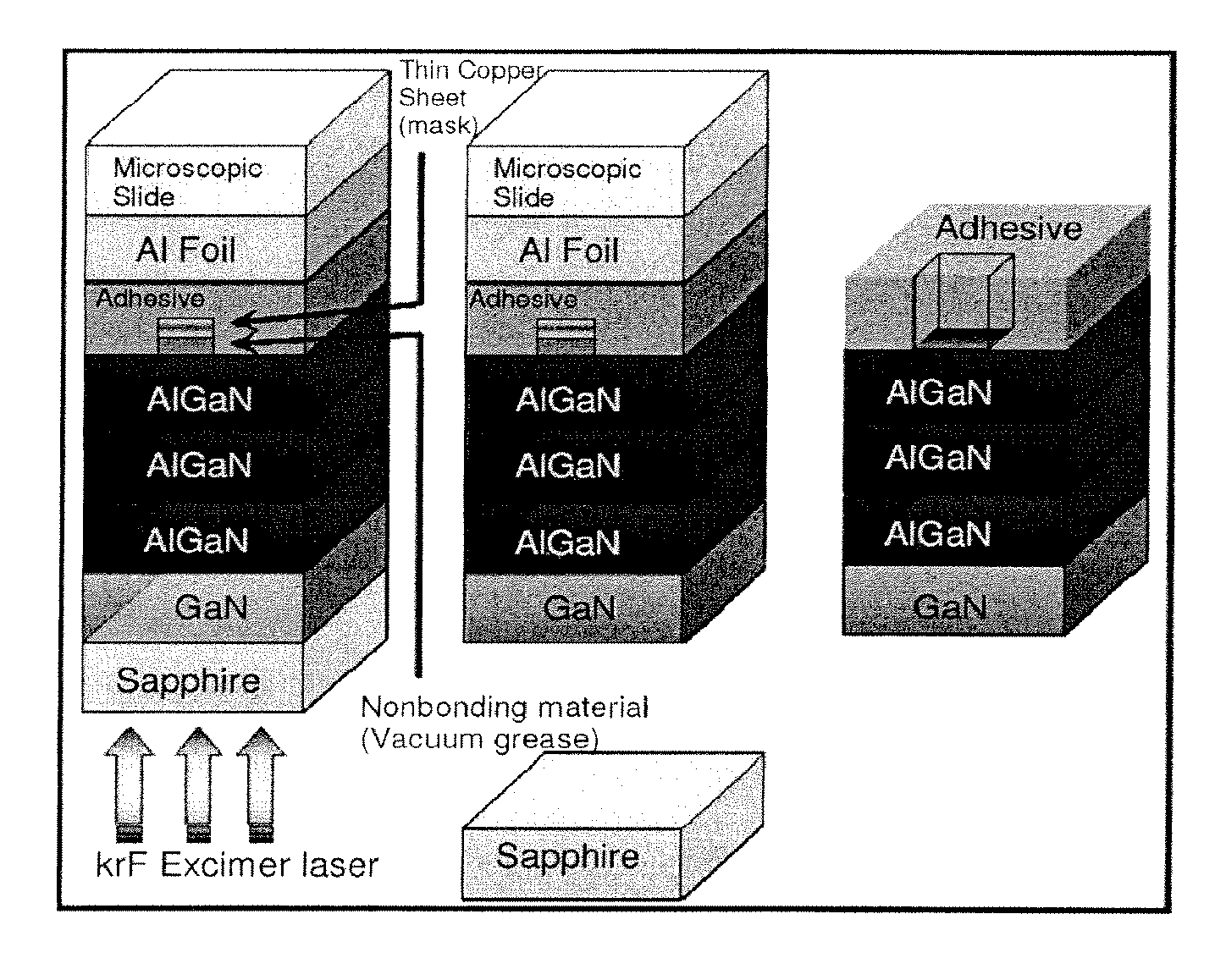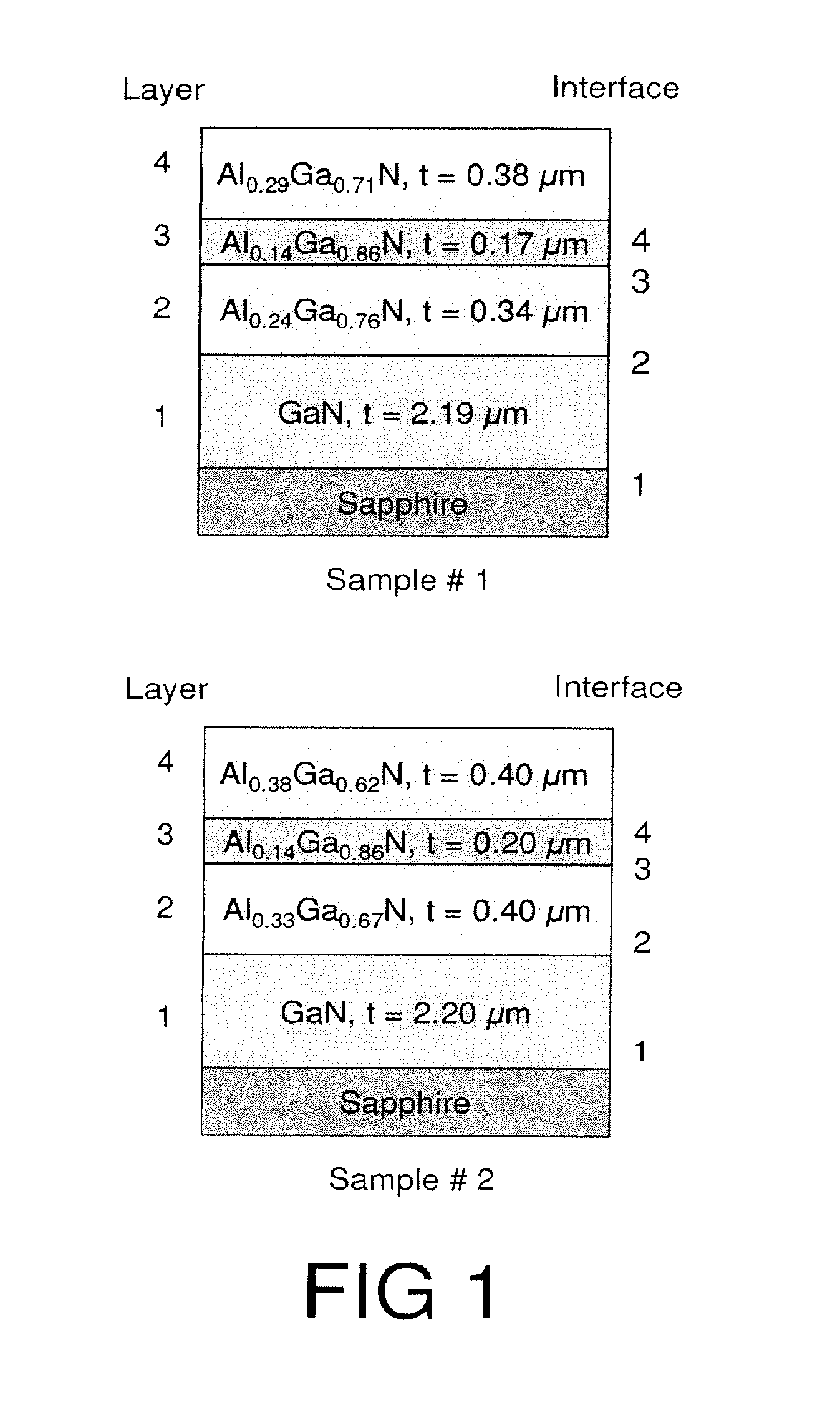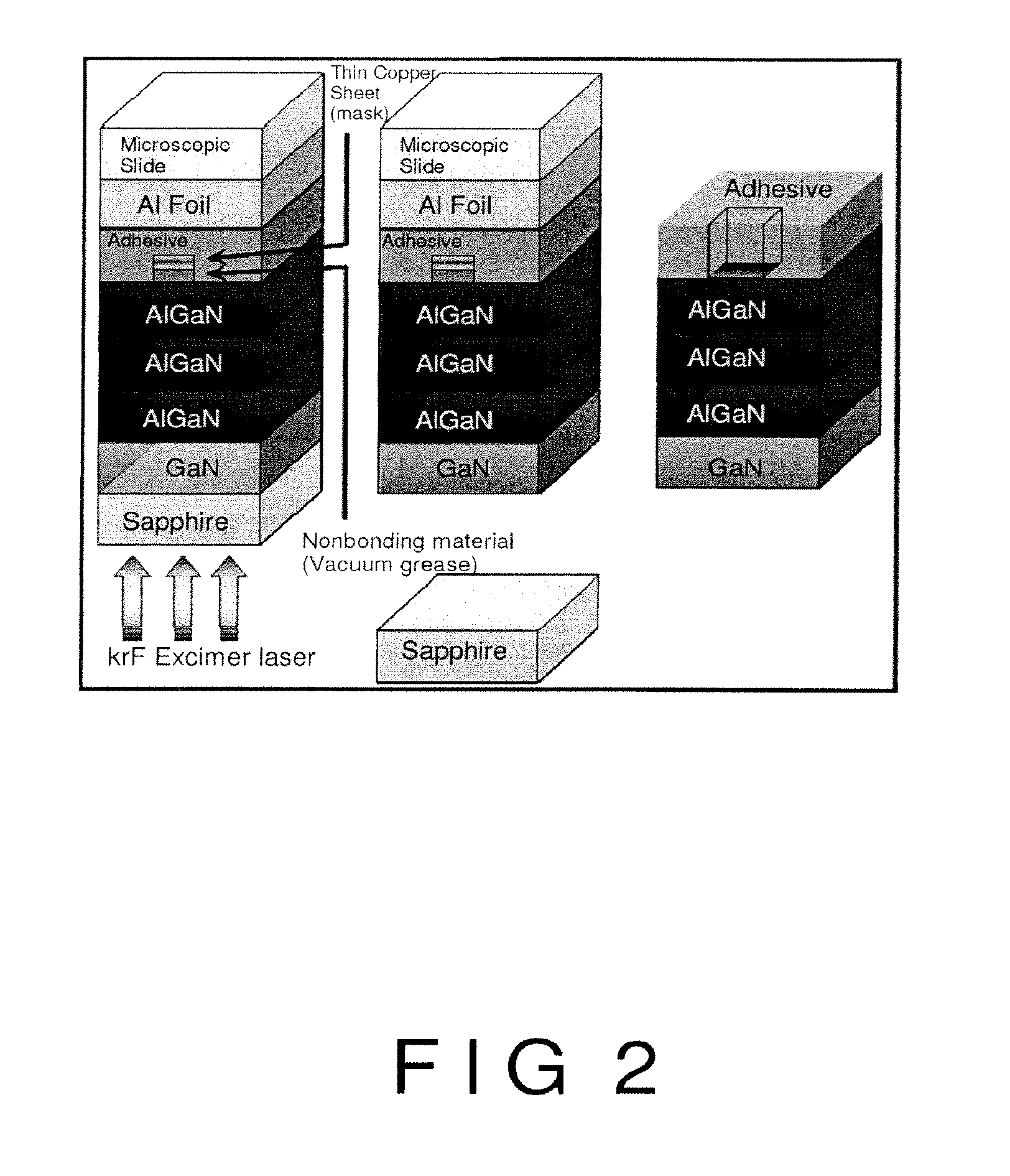Fabrication of GaN and III-nitride alloys freestanding epilayers membranes using a nonbonding laser
a technology of gan and iii-nitride alloys, which is applied in the direction of semiconductor devices, chemistry apparatus and processes, lamination ancillary operations, etc., can solve the problems of degrading the preparation and operation of epilayers, affecting the operation of the epilayer, and high density of extended defects at the gan/sapphire interfa
- Summary
- Abstract
- Description
- Claims
- Application Information
AI Technical Summary
Problems solved by technology
Method used
Image
Examples
Embodiment Construction
[0022]It will be appreciated that the invention is not limited to what has been described hereinabove merely by way of example. While there have been described what are at present considered to be the preferred embodiments of this invention, it will be obvious to those skilled in the art that various other embodiments, changes, and modifications may be made therein without departing from the spirit or scope of this invention and that it is, therefore, aimed to cover all such changes and modifications as fall within the true spirit and scope of the invention, for which letters patent is applied.
[0023]Using laser lift-off (LLO) with a nonbonding technique, freestanding 4-layer GaN / AlGaN heterostructure membranes have been obtained. The method can be applied to various fabrication procedures including fabrication of GaN epilayers, III-nitride alloys with heterostructure, and quantum wells. The method allows dissimilar classes of materials to be integrated intimately.
[0024]Referring to ...
PUM
| Property | Measurement | Unit |
|---|---|---|
| wavelength | aaaaa | aaaaa |
| threshold | aaaaa | aaaaa |
| thickness | aaaaa | aaaaa |
Abstract
Description
Claims
Application Information
 Login to View More
Login to View More - R&D
- Intellectual Property
- Life Sciences
- Materials
- Tech Scout
- Unparalleled Data Quality
- Higher Quality Content
- 60% Fewer Hallucinations
Browse by: Latest US Patents, China's latest patents, Technical Efficacy Thesaurus, Application Domain, Technology Topic, Popular Technical Reports.
© 2025 PatSnap. All rights reserved.Legal|Privacy policy|Modern Slavery Act Transparency Statement|Sitemap|About US| Contact US: help@patsnap.com



